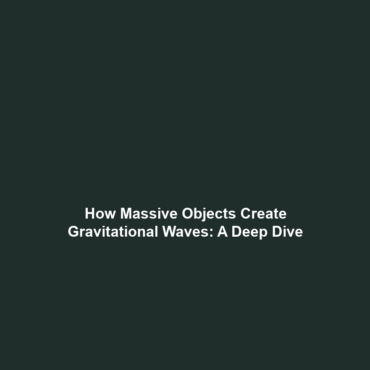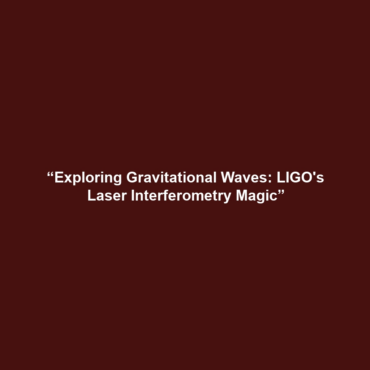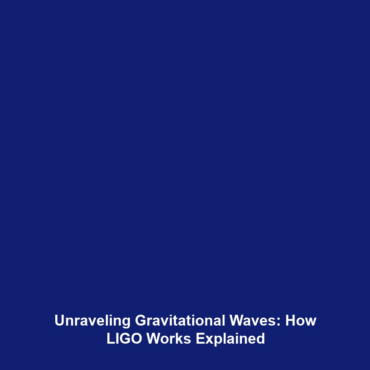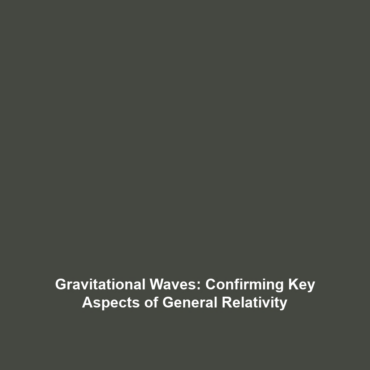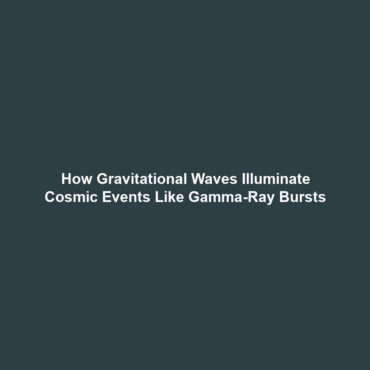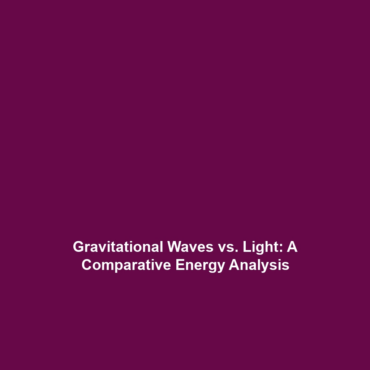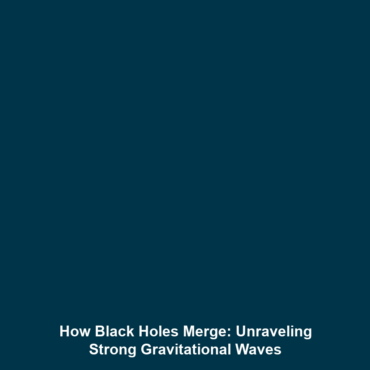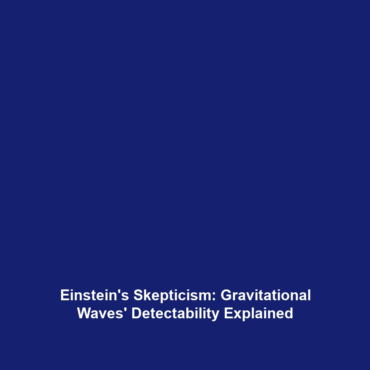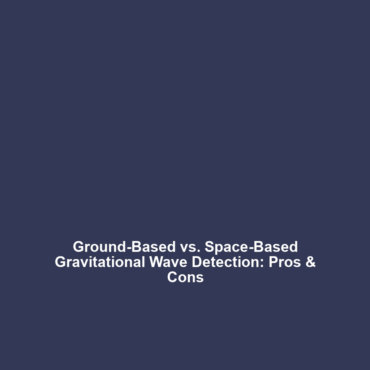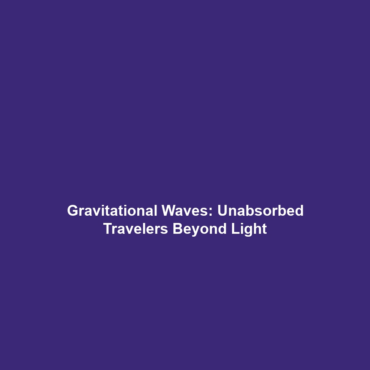How Massive Accelerating Objects Produce Gravitational Waves
Introduction
Gravitational waves are ripples in spacetime caused by the acceleration of massive objects, a phenomenon that provides invaluable insights into the cosmos. The production of gravitational waves by massive accelerating objects is significant, as it allows scientists to observe extreme astrophysical events, such as merging black holes or neutron stars. Understanding how these waves are generated enhances our comprehension of fundamental physics and the nature of the universe, making this a key area of research in gravitational wave astronomy.
Key Concepts
Definition of Gravitational Waves
Gravitational waves are generated when massive objects, such as stars and black holes, accelerate through space. According to Einstein’s General Theory of Relativity, any significant distortion in spacetime caused by these movements leads to gravitational waves traveling at the speed of light.
Massive Accelerating Objects
When massive objects accelerate, whether through rotation, collision, or orbital movements, they create variations in gravitational fields. These variations propagate outward as waves. Events like supernova explosions and the mergers of binary star systems are classic examples where such dynamics produce detectable gravitational waves.
Applications and Real-World Uses
The exploration of how massive accelerating objects produce gravitational waves has profound applications, particularly in the field of astrophysics. Here are some significant real-world uses:
- Astronomical Observation: Gravitational waves provide a new way to observe astronomical events that are otherwise invisible through traditional methods.
- Testing General Relativity: Detailed studies of these waves allow scientists to test the predictions made by Einstein’s theory.
- Understanding Cosmic Events: Through gravitational wave detection, researchers can gain insight into the characteristics and frequencies of cosmic phenomena.
Current Challenges
Despite the advancements, several challenges exist in studying how massive accelerating objects produce gravitational waves:
- Detection Sensitivity: Current technologies must improve further to detect fainter gravitational waves.
- Noise Interference: Environmental noise poses significant challenges in isolating the signals from background disturbances.
- Data Interpretation: Analyzing the complex data from gravitational wave detectors is a continuous hurdle.
Future Research and Innovations
Future research into how massive accelerating objects produce gravitational waves is ripe with potential breakthroughs:
- Next-Gen Detectors: The development of more sensitive detectors such as the Einstein Telescope is expected to enhance our gravitational wave detection capabilities.
- Machine Learning: Innovations in machine learning are anticipated to improve data analysis, allowing for quicker identification of gravitational wave signals.
- Multi-Messenger Astronomy: Combining gravitational wave observations with electromagnetic signals could lead to a more comprehensive understanding of cosmic events.
Conclusion
In summary, the study of how massive accelerating objects produce gravitational waves offers critical insights into the fundamental workings of our universe. As research in this field continues to evolve, we can expect significant advancements that will enhance our understanding of cosmic phenomena. To learn more about gravitational waves and their role in astronomy, explore related topics on our site.
